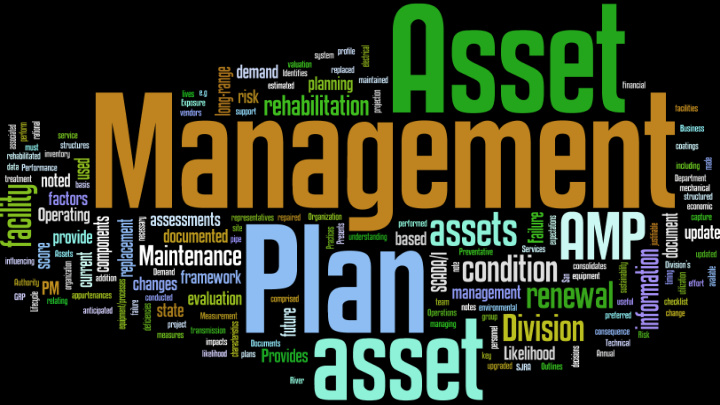



What is Asset Management? Asset management is a systematic process of developing, operating, maintaining, upgrading, and disposing of assets cost-effectively.
Reduce Corrective Extend Maintenance Equipment Costs Life Long-term System Identify Integrity Deteriorating Assets Key Benefits Reduce 10-Year Equipment Reduce Project Plan Failures Unplanned Prioritization Downtime
Level of Service Customers Regulatory Management
Asset Organization Condition Inventory Hierarchy Asset Register
Risk Exposure Likelihood of Failure Consequence of Failure
Mitigation Strategies
Define Risk Exposure Consequence of Failure (COF) Mitigation Factor Determines the Likelihood of Failure (LOF) Determines any current Determines the likelihood of an consequence of an asset mitigation to reduce LoF and asset to fail defined in years. failing in relation to social, CoF (redundancy, etc.) environmental and financial impacts. Business Risk Exposure (BRE) Determines a standardized assessment of risk exposure due to an asset failing.
10-Year Project Plan / O&M Budget Determine BRE BRE 10 - 20 BRE < 10 BRE > 20 R&R years 5 – 10 R&R years 1 – 5 Observe and review annually O&M years 2- 5 O&M next FY budget R&R Projects are generally higher dollar value and include multiple assets being renewed. • O&M items are usually single asset renewals •
Summary • Continuous condition assessment of assets 1 • Annual review of individual asset scores • Compilation of facility asset scores 2 • Prioritization of asset condition ranking • Development / Update of 10-Year Project Plan 3
Questions?
Recommend
More recommend